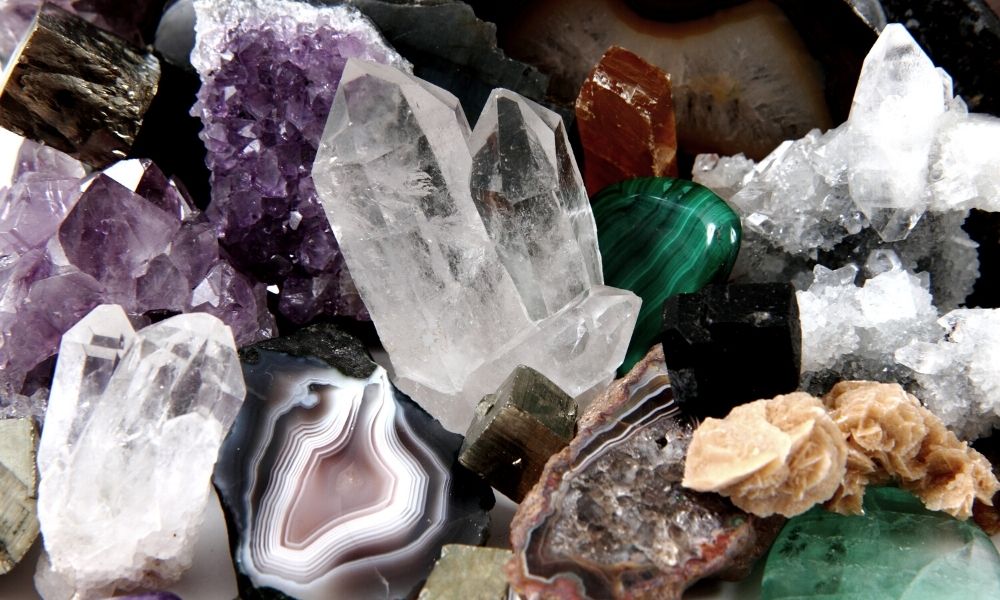The concept of birthstones isn’t some modern marketing gimmick. Since the first century, some people have believed that specific stones could protect the wearer and attract good luck. But the history of gemstones as birthstones has had some twists and turns on the way to becoming the tradition we know today.
Biblical Beginnings
The idea of birthstones evolved out of the Old Testament’s description of a bejeweled breastplate worn by the high priest of the Israelites in the Book of Exodus. It had 12 different gems on it to symbolize 12 tribes, and the priests consulted the stones to determine God’s will for people’s fates. The powerful stones were chosen for their color, not their chemical makeup, which explains why some birthstones have changed since then. Translations are difficult, but scholars believe that the original stones were:
- Carnelian
- Chrysolite
- Emerald
- Turquoise
- Sapphire
- Amethyst
- Jacinth
- Agate
- Crystal
- Beryl
- Lapis lazuli
- Jasper
Hindu Influences
A 5th-century Hindu text also speaks of a tradition of stones with mystical powers that represent a person’s birth month. The Ratna Pariksha details the relationships between gemstones and celestial bodies, deities, and the days of the week. In their culture, jewelry featured nine gemstones associated with celestial forces, surrounding a bright red stone—a ruby or spinel. They believed the wearers were granted cosmic harmony. Of course, they became attention-getting symbols of status and wealth too. Astrologers would further recommend individual stones to harness even greater power.
Merging Mythologies
As time passed, historians began to see connections among the 12 stones of “Aaron’s breastplate,” the 12 months of the year, the 12 apostles, and the 12 zodiac signs. It became fashionable to collect all the stones and wear them at once. By the 8th century, the custom changed to wearing one gem each month for heightened powers and protection. People didn’t begin wearing the gem associated with their birth month until the 16th century, although it’s not clear if the tradition started in Germany or Poland.
Changing Standards
The list of birthstones you’re probably familiar with was created in 1912 when the United States’ National Association of Jewelers came together for a consensus on the gem for each month. They took into account the long history of different beliefs, but they also considered practical concerns. Jewelers wanted to ensure that the gemstones would be available in large quantities to sell. In 1952, the Jewelry Industry Council of America added some alternate gems to the list—and it keeps evolving. As recently as 2016, spinel was named to the month of August. The United Kingdom has its own “official,” mostly similar list.
Alternative Birthstones
As buyers found ways to incorporate gems into their lives beyond jewelry—as good luck pieces, ceremonial stones, and decor—they began to embrace alternative birthstones as well. The moral here? If there’s a gem you want to call your birthstone, you can probably find a way to justify it. These lists are based on different systems, such as:
- The zodiac
- Guardian angels
- The apostles
- Birth hour
- Birth day of the week
- Seasons of the year
Gems by Month
January
Garnet
This is the only birthstone that hasn’t changed since at least the 15th century. The word “garnet” derives from a term for “seed” because it resembles a pomegranate seed.
February
Amethyst
In the past, February has also been associated with pearls and hyacinths (red, orange, and yellow forms of zircon). The popularity of green amethysts is growing for jewelry.
March
Aquamarine
For a few centuries, bloodstone was also the March birthstone. Today, the red stone
jasper is also a March gemstone. The cool, clear blue of aquamarine invokes the sea and is believed to have healing properties.
April
Diamond
Anyone born in April lucked out with one of the most precious gems on earth, although the United Kingdom has standardized less expensive rock crystal as an alternative.
May
Emerald
It’s hard to top an emerald, but the U.K. has named chrysoprase as another May birthstone. Chrysoprase has a similar green tone with a more opaque, glowing effect.
June
Pearl
June has had several birthstones over the centuries, only to end up with something not technically a stone. It’s been associated with cat’s eye, turquoise, and agate. Today, its official stones include alexandrite and moonstone.
July
Ruby
Rubies exude strength, passion, and vibrancy of life. It’s resilient, too, ranking on the Mohs scale as just slightly less hard than diamonds. Or you might prefer ruby’s co-birthstone, carnelian, as an earthier red alternative. Turquoise and onyx were formerly linked with July, too.
August
Peridot
You can pronounce this apple-green gem “per-i-DOE” or “per-i-DOT,” or you could just try one of August’s alternate birthstones, spinel or sardonyx. You can find spinel in a variety of colors, with red and pink as the most valuable. Sardonyx is a kind of agate that can be dyed for beautiful banding.
September
Sapphire
Sapphires actually come in several colors classified as “fancy,” not just blue: white, pink, yellow, green, orange, purple, and black. If it’s the blue you love, you might prefer September’s alternate gemstone, lapis lazuli.
October
Opal
October’s birthstone has several variations; you’ll find the iridescent play of color in milky-white opals, black opals, blue-green opals, and orange fire opals. An alternate for the month: tourmaline.
November
Topaz
This is one of the most flexible birthstones since topaz comes in so many colors. Known as “the lucky stone,” Cleopatra believed it cured toothaches and insomnia. Or you can embrace its co-stone, citrine, which has honey and amber tones.
December
Tanzanite, turquoise, and zircon
The main requirement for a December birthstone seems to be that it be blue. Tanzanite, with its distinctive blue-violet hue, was added in 2002 as it became more commercially available. In past centuries, even lapis lazuli was in the mix.
Do you feel a connection to your birthstone? Any gem is meaningful if it resonates with you. The history of gemstones as birthstones shows how beliefs—and “official” designations—change. But if your birthstone was the beginning of a passion for gemstones, you’ll love Brazil Gems’ selection of unique geodes, gifts, display pieces, and Brazilian crystals for sale.


